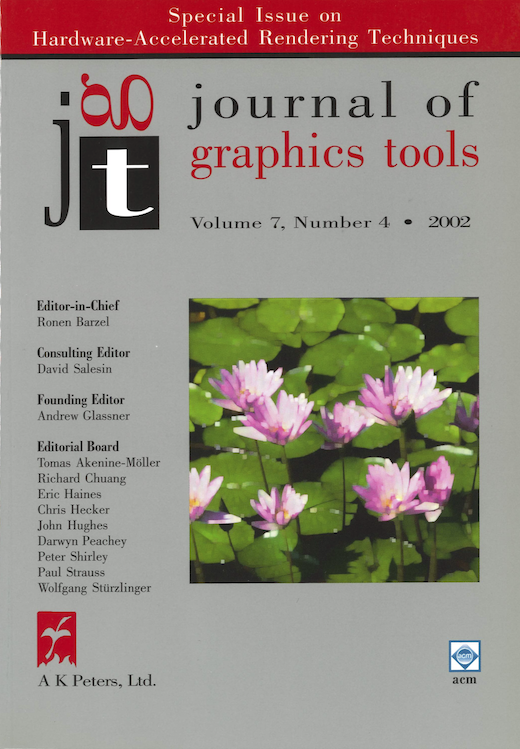
Special Issue on Hardware-Accelerated Rendering Techniques Article
Wolfgang Heidrich, Wolfgang Stürzlinger
Abstract:
Real-time rendering systems are approaching a level of quality and economy that surpasses even the most elaborate offline rendering system available only ten years ago. As a consequence, hardware-accelerated rendering has had a strong impact on applications such as computer games, modeling and animation, design, and scientific visualization.
The aim of this special issue of the journal of graphics tools is to provide an overview of the state-of-the-art application of graphics hardware to problems in rendering, modeling, visualization, and other areas. One of the challenges in this area is to transform traditional algorithms into a form that adapts to the restrictions dictated by graphics hardware and takes advantage of its specific processing capabilities. These constraints often mandate significant changes or simplifications to the original algorithms, and sometimes lead to the development of new methods. Often it is possible to take a solution developed for solving a particular problem with the help of graphics hardware and to apply the ideas behind it to a completely different problem. This transfer of ideas is one of the motivations behind this special issue, which brings together work from a variety of application domains.
We received 33 submissions for this special issue, illustrating the recent interest in hardware-assisted techniques. From this, we selected 11 papers to be presented here. These represent a cross section of the different application areas for hardware-accelerated rendering. From realistic illumination algorithms to shadowing, from image-based rendering to non-photorealistic rendering, from digital imaging to digital halftoning, and from geometric modeling to collision detection, the papers in this special issue demonstrate the state-of-the art in hardware-assisted techniques. We hope you will enjoy these contributions as much as we did.
